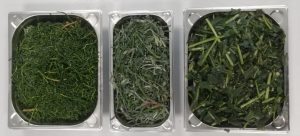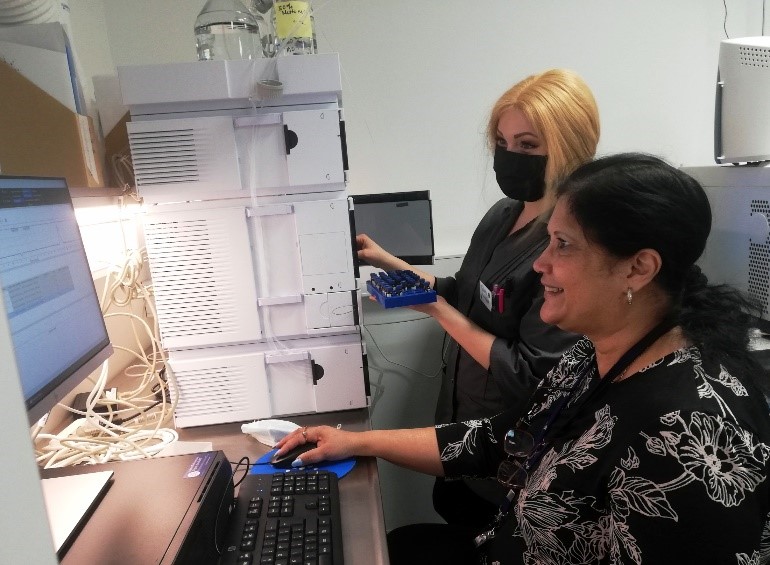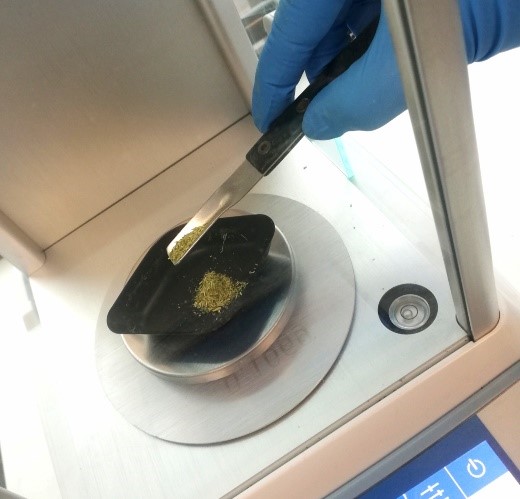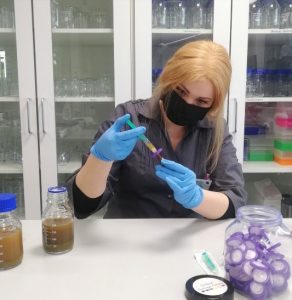Green fractionation and biomass characterization
Work package no. 5 (WP5) focuses on the processing of green and fresh, but not food-grade biomass. Here in Aalborg University (AAU), we have been fractionated and characterized Salicornia ramosissima, Salicornia europaea, Tripolium pannonicum and Crithmum maritimum biomasses grown in the greenhouses of RIASEARCH and Leibniz Universität Hannover (LUH).

In green fractionation, the plant material is screw pressed to green juice and fibre residue, which are considered individually. The characterization considered the amounts of ash, protein, lipids, organic acids, carbohydrates and lignin in the biomass. We have also studied how the chemical composition changes, if the plant is exposed to different salinities in the cultivation phase. Especially S. europaea and T. pannonicum showed to be rich in protein and having a low lipid content. As halophytes accumulate salt to their tissues, ash covers a large fraction of the total plant dry matter and the concentration of different minerals were analysed in co-operation with CELABOR. Obtained information about the chemical composition of the considered plants can be used for planning and optimizing the cultivation conditions and biorefinery processes.


Extraction of protein by acidification
AAU is also responsible of WP5 task considering the extraction of protein by acidification. In this task, water-soluble protein is separated from green juice by fermenting it using lactic acid bacteria. Bacteria uses the available sugars in the juice and produces lactic acid, which decreases the juice pH and coagulates protein. This method is developed for grasses and agricultural residues [1], but AQUACOMBINE project is the first one to test it for halophyte biomass.
The high salt concentration of halophyte juice makes it a challenging media for lactic acid bacteria. The ongoing screening study is aiming to find a bacterial strain that can thrive in the saline and acidic conditions and, therefore, be suitable for fermenting the freshly pressed halophyte juice. In the screening, several bacterial strains are tested in different conditions to find the suitable strain for green halophyte biorefinery purposes.

- Kiel, P.; Anderson, M.; Lübeck, M. A METHOD OF PROVIDING FUNCTIONAL PROTEINS FROM A PLANT MATERIAL 2015.
Acknowledgement
This project has received funding from the European Union’s Horizon 2020 research and innovation programme under Grant Agreement No 862834. Any results of this project reflects only this consortium’s view and the European Commission is not responsible for any use that may be made of the information it contains.


















